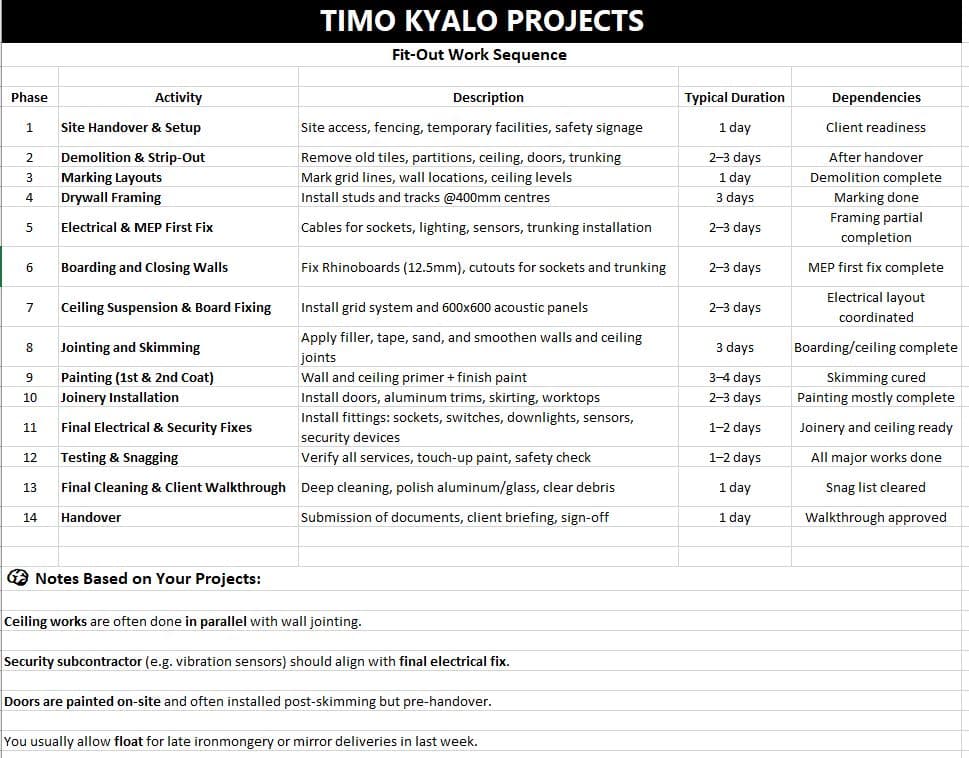
Table of Contents
Open Table of Contents
Introduction
In the built environment, the construction site is where planning meets execution. While architectural designs and schedules are born in offices, it’s in the field that delays, overruns, and quality issues manifest.
A Construction Site Supervisor plays a pivotal role in translating technical drawings into physical reality — safely, cost-effectively, and on time. This post breaks down my professional approach to managing construction sites, ensuring alignment across stakeholders, maintaining regulatory compliance, and upholding quality.
Key Responsibilities of a Site Supervisor
Whether in urban high-rise developments or remote housing estates, the foundation of successful site management revolves around:
- Daily Oversight: Ensuring all site activities align with the day’s plan
- Subcontractor Coordination: Managing teams with varied scopes — MEP, structural, interior
- Health, Safety & Environment (HSE): Enforcing safety protocols and minimizing site incidents
- Quality Assurance: Verifying that construction complies with specs, codes, and regulations
- Progress Reporting: Communicating milestones and blockers to the PM or client team
A good supervisor balances operational efficiency with adaptability — adjusting schedules and team deployment based on weather, supply chain issues, or site conditions.
Effective Resource Allocation
Managing a construction site isn’t just about directing labor — it’s about optimizing time, equipment, and materials. Here’s how I approach it:
- Daily Briefings & Lookahead Planning: 7-day rolling plans help align delivery timelines with upcoming work phases.
- Equipment Utilization Metrics: Tracking equipment idle time vs. productive use to reduce costs.
- Material Buffer Zones: Creating buffer stock for critical path items (e.g., steel, cement) to avoid work stoppages.
- Digital Tools: Using tools like Microsoft Project or Jira to track deliveries and site dependencies.
Example: When coordinating backfilling and slab casting, I use a material log sheet updated twice daily to ensure aggregates and cement are on standby before mobilizing formwork teams.
Managing Subcontractors and Site Teams
Interior and structural works often involve multiple subcontractors — each with different expectations, deliverables, and work rhythms.
Here’s how I manage them effectively:
- Kickoff Meetings: Clarify working hours, access routes, and milestones
- Permit-to-Work System: Ensure all teams operate with formal clearance
- Daily Targeting: Issue micro-goals daily to maintain measurable momentum
- Conflict Sequencing: For example, ceiling installation only begins after duct and conduit rough-ins
- Joint Inspections: Before covering up services or closing finishes
Supervisors who respect each subcontractor’s needs and constraints will get the best work out of them.
Monitoring Progress and Ensuring Quality
Quality assurance isn’t something you do at handover — it starts on Day One. Here’s how I approach quality on site:
- Progress Photos: Taken daily and timestamped to track visible milestones
- Marked-Up Drawings: Used on site for live instructions and issue tracking
- Pre-Handover Walks: Schedule with client before each trade closes their works
- Checklists: Use of printed QA/QC and safety checklists
- Snag Management: Maintain a running snag list with status and responsible party
Case Study: NCBA Tatu City Interior Fit-Out
During the NCBA Tatu City fit-out, we had less than 90 days to fully fit the space with MEP, partitions, ceilings, and finishes. It was a fast-paced, multi-trade coordination challenge.
My role included:
- Planning daily site sequencing
- Monitoring ducting, electrical first-fix, and ceiling closures
- Running client walkthroughs at each milestone
- Issuing snag sheets and managing punch lists
The project was completed without major overruns, thanks to daily supervision, planning tools, and consistent site reporting.
Conclusion
Construction site coordination is both a science and an art. While tools like Microsoft Project, checklists, and daily reports matter, it’s your presence, discipline, and decision-making that keep things moving.
Whether it’s a bank fit-out, a housing scheme, or a retail rollout — great execution starts with the site supervisor.